
Lycaenidae is the second-largest family of butterflies, with over 6,000 species worldwide, whose members are also called gossamer-winged butterflies. They constitute about 30% of the known butterfly species.
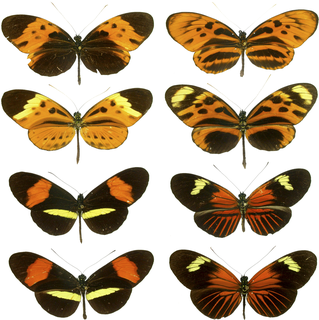
The Heliconiinae, commonly called heliconians or longwings, are a subfamily of the brush-footed butterflies. They can be divided into 45–50 genera and were sometimes treated as a separate family Heliconiidae within the Papilionoidea. The colouration is predominantly reddish and black, and though of varying wing shape, the forewings are always elongated tipwards, hence the common name.

Riodinidae is the family of metalmark butterflies. The common name "metalmarks" refers to the small, metallic-looking spots commonly found on their wings. The 1532 species are placed in 146 genera. Although mostly Neotropical in distribution, the family is also represented both in the Nearctic and the Palearctic.

The Nymphalinae are a subfamily of brush-footed butterflies. Sometimes, the subfamilies Limenitidinae, and Biblidinae are included here as subordinate tribe(s), while the tribe Melitaeini is occasionally regarded as a distinct subfamily.
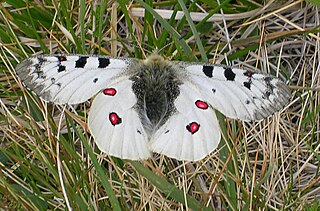
The Parnassiinae or snow Apollos are a subfamily of the swallowtail butterfly family, Papilionidae. The subfamily includes about 50 medium-sized, white or yellow species. The snow Apollos are high-altitude butterflies and are distributed across Asia, Europe and North America.

Pyrginae, commonly known as spread-winged skippers, are a subfamily of the skipper butterfly family (Hesperiidae). The subfamily was established by Hermann Burmeister in 1878. Their delimitation and internal systematics has changed considerably in recent years, but as of 2009 the uncertainties surrounding the evolutionary relationships of many genera in this subfamily are widely resolved.

The subfamily Theclinae is a group of butterflies, often referred to as hairstreaks, with some species instead known as elfins or by other names. The group is part of the family Lycaenidae, the "gossamer-winged butterflies". There are many tropical species as well as a number found in the Americas. Tropical hairstreaks often have iridescent blue coloration above, caused by reflected light from the structure of the wing scales rather than by pigment. Hairstreaks from North America are commonly brown above. Few Theclinae are migratory. Members of this group are described as 'thecline'.
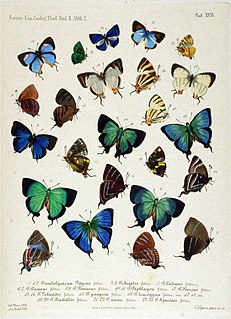
The Eumaeini are a tribe of gossamer-winged butterflies. They are typically placed in the subfamily Theclinae, but sometimes considered a separate subfamily Eumaeinae. Over 1,000 species are found in the Neotropical realm

The Cheritrini are a small tribe of butterflies in the family Lycaenidae; they contain the imperials and allies. Their closest living relatives seem to be the Horagini; indeed, the genus Ahmetia was in the past often placed there.

The Aphnaeinae are a subfamily of butterflies in the family Lycaenidae.
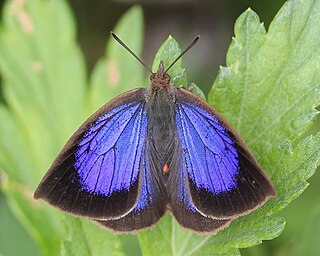
Arhopala is a very large genus of gossamer-winged butterflies (Lycaenidae). They are the type genus of the tribe Arhopalini. In the relatively wide circumscription used here, it contains over 200 species collectively known as oakblues. They occur from Japan throughout temperate to tropical Asia south and east of the Himalayas to Australia and the Solomon Islands of Melanesia. Like many of their relatives, their caterpillars are attended and protected by ants (myrmecophily). Sexual dichromatism is often prominent in adult oakblues.

Athamanthia is an Eastern Palearctic genus of butterfly in the family Lycaenidae. Athamanthia is differentiated from Lycaena by characters of the male genitalia.
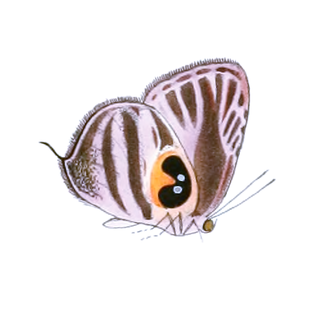
Enos is a genus of gossamer-winged butterflies. Among these, it belongs belong to the tribe Eumaeini of the subfamily Theclinae. These small butterflies occur essentially all over the Neotropics.

Lamasina is a genus of gossamer-winged butterflies ; the validity of its name is subject to dispute. Among its family, these sexually dimorphic Lepidoptera belong to the tribe Eumaeini of the subfamily Theclinae. Lamasina species are found mainly in northern South America, approximately to the Guyanas. L. draudti is also found in Central America south of the Yucatán Peninsula. In the Andes, the genus extends somewhat further south; L. rhaptissima almost reaches Bolivia.
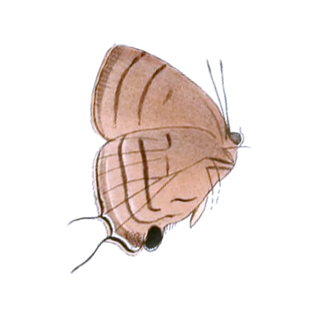
Theritas is a genus of gossamer-winged butterflies found in the Neotropics. Among the tribe Eumaeini of its subfamily Theclinae, it is usually placed in the group around the genus Atlides. In particular, it seems most closely related to Arcas.
Lycaena orus, the western sorrel copper, is a butterfly of the family Lycaenidae. It is found only in South Africa. The habitat consists of fynbos at various altitudes, from sea level to montane regions.
Lycaena clarki, the eastern sorrel copper, is a butterfly of the family Lycaenidae. It is found only in South Africa.

Lycaena boldenarum, the boulder copper, is a species of butterfly which is endemic to New Zealand, it is found on both North Island and South Island in a wide variety of open habitats including grassland, shingle and sand dunes. They are normally only active in bright sunny conditions and their flight is usually low to the ground. The boldenarum part of the species name given by the Scottish entomologist Adam White in honour of his first wife, Helen and her sister Frances, whose maiden name was Bolden. It shares the Maori name pepe para riki with two congeners the common copper and the glade copper.
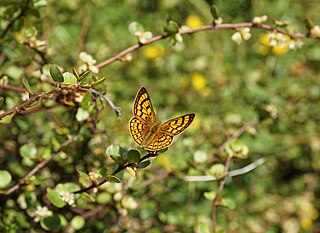
Lycaena rauparaha, Rauparaha's copper or mokarakare is a species of butterfly endemic to New Zealand. It acquired its English common name because it occurred in the same coastal areas as the rangatira (chief) and war leader of Ngāti Toa Maori, Te Rauparaha.
















